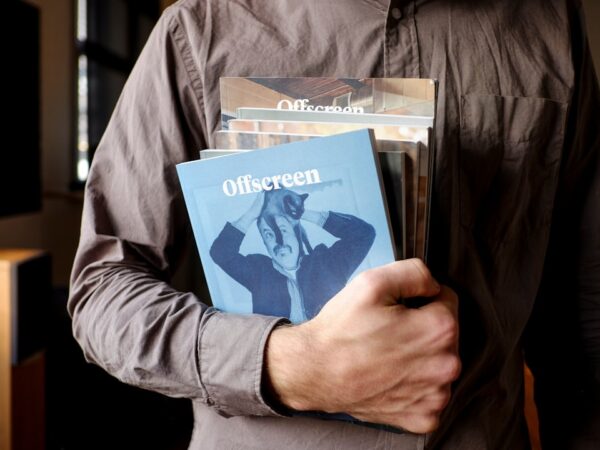
Top Film Adaptations: Best Book-to-Movie Picks
Book-to-movie adaptations have become increasingly popular in recent years, with audiences flocking to theaters to see their favorite stories come to life on the big screen. From beloved classics to contemporary bestsellers, there is something captivating about seeing a well-loved book transformed into a visual medium. The appeal of adaptations lies in the opportunity to experience a story in a new and immersive way, while also being able to compare and contrast the differences between the original source material and its cinematic counterpart.
Key Takeaways
- Book-to-movie adaptations have a timeless appeal that continues to captivate audiences.
- Adapting literature to the screen presents unique challenges, from condensing the story to capturing the author’s voice.
- Casting is a crucial element in bringing beloved characters to life and can make or break an adaptation.
- Changing source material can lead to pitfalls, such as alienating fans or losing the essence of the story.
- Filmmakers have the power to put their own spin on books, creating new interpretations that can enhance the original material.
From Page to Screen: The Challenges of Adapting Literature
Translating a written work into a visual medium like film poses numerous challenges. One of the main difficulties lies in condensing a lengthy novel into a two-hour movie. Filmmakers must carefully select which elements of the story to include and which to omit, often resulting in significant changes to the narrative structure. Additionally, capturing the essence of a character or setting described in great detail in a book can be challenging for filmmakers. They must find creative ways to bring these elements to life on screen while staying true to the author’s vision.
There have been both successful and unsuccessful adaptations throughout the years. One example of a successful adaptation is “The Lord of the Rings” trilogy directed by Peter Jackson. Despite the vastness of J.R.R. Tolkien’s epic fantasy novels, Jackson managed to capture the essence of the story and its characters while also making necessary changes for the medium of film. On the other hand, there have been adaptations that failed to capture the magic of the source material, such as “Eragon,” which received negative reviews for its poor execution and deviation from the original story.
The Art of Casting: Bringing Beloved Characters to Life
One of the most crucial aspects of a successful adaptation is finding the right actors to portray iconic characters. Audiences often have preconceived notions about how these characters should look and behave, making casting choices crucial to the success of the film. When an actor perfectly embodies a beloved character, it can elevate the entire adaptation and create a lasting impression on audiences.
There have been numerous examples of successful casting choices in book-to-movie adaptations. One notable example is the casting of Daniel Radcliffe as Harry Potter in the “Harry Potter” film series. Radcliffe’s portrayal of the iconic character captured the essence of Harry’s bravery, vulnerability, and determination, endearing him to fans around the world. Another successful casting choice is Jennifer Lawrence as Katniss Everdeen in “The Hunger Games” series. Lawrence’s performance brought depth and complexity to the character, making her a relatable and inspiring heroine.
When Adaptations Go Wrong: The Pitfalls of Changing Source Material
| Adaptation | Source Material | Pitfalls |
|---|---|---|
| The Last Airbender | Avatar: The Last Airbender (animated series) | Whitewashing, poor casting, inaccurate portrayal of characters and story |
| Catwoman | Batman comics | Deviation from source material, poor writing, bad CGI |
| Percy Jackson and the Olympians: The Lightning Thief | Percy Jackson and the Olympians (book series) | Deviation from source material, poor casting, inaccurate portrayal of characters and story |
| The Dark Tower | The Dark Tower (book series) | Deviation from source material, poor writing, bad casting |
One of the most controversial aspects of book-to-movie adaptations is when changes are made to the source material. Fans of the original book often have strong opinions about how the story should be portrayed on screen, and any deviation from their expectations can lead to backlash. Filmmakers must strike a delicate balance between staying true to the source material and making necessary changes for the medium of film.
One example of an adaptation that faced backlash for changing the original story is “The Hobbit” trilogy directed by Peter Jackson. While J.R.R. Tolkien’s novel is a relatively short and straightforward adventure, Jackson expanded it into three films, adding new characters and subplots that were not present in the book. Many fans felt that these additions detracted from the original story and diluted its impact. Another example is “Percy Jackson & The Olympians: The Lightning Thief,” which received criticism for its significant deviations from Rick Riordan’s popular series.
The Power of Interpretation: How Filmmakers Put Their Own Spin on Books
While staying true to the source material is important, filmmakers also have the opportunity to add their own creative touch to adaptations. This can involve adding new elements to the story, exploring different perspectives, or reimagining certain aspects of the narrative. When done successfully, these creative choices can enhance the adaptation and offer a fresh take on the original material.
One example of an adaptation that successfully added new elements to the original story is “The Shawshank Redemption.” Based on Stephen King’s novella, the film expanded on the characters and their relationships, adding depth and complexity to the narrative. Another example is “Gone Girl,” which was adapted from Gillian Flynn’s novel. The film made changes to the ending, offering a different interpretation of the story that surprised and intrigued audiences.
The Magic of Storytelling: How Adaptations Can Enhance the Original Material
While some purists argue that adaptations can never surpass the original source material, there are instances where adaptations have brought new life to classic stories. By utilizing the visual and auditory elements of film, adaptations can enhance the storytelling experience and offer a fresh perspective on familiar tales.
One example of an adaptation that improved upon the original material is “The Godfather.” Mario Puzo’s novel was already a bestseller, but Francis Ford Coppola’s film elevated the story to new heights. With its iconic performances, stunning cinematography, and memorable score, “The Godfather” became a cultural phenomenon and solidified its place as one of the greatest films of all time. Another example is “To Kill a Mockingbird,” which was adapted from Harper Lee’s Pulitzer Prize-winning novel. The film brought the story’s themes of racial injustice and moral courage to a wider audience, sparking important conversations about social issues.
The Evolution of Book-to-Movie Adaptations Over the Years
Book-to-movie adaptations have evolved significantly over time, reflecting advancements in technology and changes in audience preferences. In the early days of cinema, adaptations were often simplified versions of the source material, with limited special effects and a focus on dialogue and performances. However, as technology advanced, filmmakers were able to bring more fantastical and visually stunning stories to life.
One example of how adaptations have changed over time is the “Harry Potter” film series. The first film, “Harry Potter and the Philosopher’s Stone,” was released in 2001 and had a relatively modest budget. As the series progressed, the films became increasingly grand in scale, with elaborate sets, breathtaking visual effects, and epic battle sequences. This evolution mirrored the growing complexity and darkness of J.K. Rowling’s novels.
The Impact of Adaptations on Literature and Pop Culture
Book-to-movie adaptations have had a significant impact on popular culture, influencing trends in fashion, merchandise, and even tourism. When a beloved book is adapted into a successful film or series, it can introduce new audiences to the original source material and spark a renewed interest in reading.
One example of an adaptation that had a profound impact on popular culture is “The Twilight Saga.” Stephenie Meyer’s vampire romance novels became a global phenomenon with the release of the film adaptations. The success of the films led to a surge in vampire-themed books, movies, and television shows, as well as merchandise ranging from clothing to jewelry. Similarly, “The Hunger Games” series by Suzanne Collins sparked a wave of dystopian young adult novels and inspired a generation of readers.
The Most Successful Book-to-Movie Adaptations of All Time
There have been numerous successful book-to-movie adaptations throughout the years, both in terms of critical acclaim and box office success. These adaptations have managed to capture the essence of the source material while also appealing to a wide audience.
One of the highest-grossing book-to-movie adaptations of all time is “The Lord of the Rings: The Return of the King.” Directed by Peter Jackson, the film won 11 Academy Awards and grossed over $1.1 billion worldwide. Another critically acclaimed adaptation is “The Shawshank Redemption,” which was based on Stephen King’s novella. Despite its initial box office disappointment, the film has since gained a cult following and is often regarded as one of the greatest films of all time.
What’s Next for Book-to-Movie Adaptations: Upcoming Projects to Watch Out For
Book-to-movie adaptations show no signs of slowing down, with numerous projects in the works that are sure to excite fans of both literature and film. From beloved classics to contemporary bestsellers, there is something for everyone on the horizon.
One highly anticipated adaptation is “Dune,” based on Frank Herbert’s science fiction novel. Directed by Denis Villeneuve, the film boasts an all-star cast and promises to bring the epic story to life in a visually stunning way. Another upcoming adaptation is “The Power of the Dog,” based on Thomas Savage’s novel. Directed by Jane Campion and starring Benedict Cumberbatch, the film explores themes of masculinity and power in the American West.
Book-to-movie adaptations continue to captivate audiences around the world, offering a unique and immersive way to experience beloved stories. While there are challenges in translating written works to film, successful adaptations can bring new life to classic tales and introduce new audiences to the joys of reading. As technology continues to advance and filmmakers push the boundaries of storytelling, the future of book-to-movie adaptations looks bright, promising even more exciting and innovative adaptations in the years to come.
FAQs
What is the article about?
The article is about the best books that have been adapted into movies.
What are some examples of books turned into movies?
Some examples of books turned into movies include “The Lord of the Rings,” “The Hunger Games,” “Harry Potter,” “The Fault in Our Stars,” and “To Kill a Mockingbird.”
What makes a book a good candidate for a movie adaptation?
A book that has a strong plot, well-developed characters, and vivid descriptions is often a good candidate for a movie adaptation. Additionally, a book that has a large fan base and a built-in audience can also make for a successful movie adaptation.
What are some challenges that come with adapting a book into a movie?
Some challenges that come with adapting a book into a movie include condensing the story into a shorter format, staying true to the source material while also making changes to make it work on screen, and pleasing both fans of the book and moviegoers who may not have read the book.
What are some of the benefits of adapting a book into a movie?
Adapting a book into a movie can bring the story to a wider audience, introduce new readers to the source material, and provide a new way to experience the story. Additionally, a successful movie adaptation can lead to increased book sales and renewed interest in the original work.


















